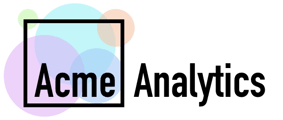Few organizations take full advantage of data generated outside their walls. A well-structured plan for using external data can provide a competitive edge.
Many companies have made great strides in collecting and utilizing data from their own activities. So far, though, comparatively few have realized the full potential of linking internal data with data provided by third parties, vendors, or public data sources. Overlooking such external data is a missed opportunity. Organizations that stay abreast of the expanding external-data ecosystem and successfully integrate a broad spectrum of external data into their operations can outperform other companies by unlocking improvements in growth, productivity, and risk management.
The COVID-19 crisis provides an example of just how relevant external data can be. In a few short months, consumer purchasing habits, activities, and digital behavior changed dramatically, making preexisting consumer research, forecasts, and predictive models obsolete. Moreover, as organizations scrambled to understand these changing patterns, they discovered little of use in their internal data. Meanwhile, a wealth of external data could—and still can—help organizations plan and respond at a granular level.
Although external-data sources offer immense potential, they also present several practical challenges. To start, simply gaining a basic understanding of what’s available requires considerable effort, given that the external-data environment is fragmented and expanding quickly. Thousands of data products can be obtained through a multitude of channels—including data brokers, data aggregators, and analytics platforms—and the number grows every day. Analyzing the quality and economic value of data products also can be difficult. Moreover, efficient usage and operationalization of external data may require updates to the organization’s existing data environment, including changes to systems and infrastructure. Companies also need to remain cognizant of privacy concerns and consumer scrutiny when they use some types of external data.
These challenges are considerable but surmountable. This article discusses the benefits of tapping external-data sources, illustrated through a variety of examples, and lays out best practices for getting started. These include establishing an external-data strategy team and developing relationships with data brokers and marketplace partners. Company leaders, such as the executive sponsor of a data effort and a chief data and analytics officer, and their data-focused teams should also learn how to rigorously evaluate and test external data before using and operationalizing the data at scale.
External-data success stories
Companies across industries have begun successfully using external data from a variety of sources (Exhibit 1). The investment community is a pioneer in this space. To predict outcomes and generate investment returns, analysts and data scientists in investment firms have gathered “alternative data” from a variety of licensed and public data sources, many of which draw from the “digital exhaust” of a growing number of technology companies and the public web. Investment firms have established teams that assess hundreds of these data sources and providers and then test their effectiveness in investment decisions.
